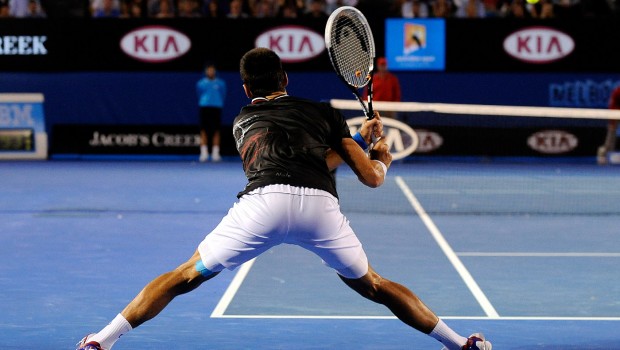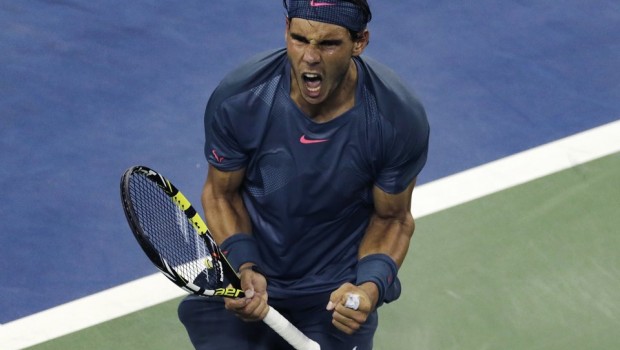In part one we covered the layoff and subsequent improvement of Rafael Nadal on his backhand groundstroke since his comeback in February. For Nadal to become the best player in history, and to beat a player like Novak Djokovic on faster surfaces, adjustments to his technique needed to be made. In the 7 months he was away from the game he drastically changed both his forehand and backhand technique. We looked at the backhand technique and what he did was simplify the stroke by taking the racket straight back. The forehand changes are similar in terms of simplifying and cleaning up the technique. We’ll look at what he did specifically in the images below.
How far can you tilt Rafa?
The first major change in the forehand of Nadal is the forward tilt of the racket. We can see in the images below that not only does he tilt his racket forward severely in the new forehand, but he keeps this tilted position until letting go of the racket with the non-dominant hand.
The tilting of the racket forward is important for two reasons. First, it helps to keep the elbow away during the unit turn and preparation. It also should help keep the elbow away after letting go of the racket with the non-dominant hand. Elbow separation and space is very important in hitting a proper stretch shorten cycle (SSC) forehand.
Compared to the images above of his forehand at the 2012 Australian Open, there is a significant difference in the tilt and angle of his racket as well as the position of the hitting elbow during the unit turn. The transition to the ideal SSC position seems more smooth in the current version compared to the Nadal forehand of the past.
An elbow here, an elbow there…
In his old forehand, the elbow remained tucked into his side and the movement of the hitting hand backwards in the swing was inefficient and awkward. He still achieved the key SSC position near the end, but the way he got to the destination seemed to hurt him against players who could take time away from him with pace. With the forehand adjustments made, the stroke is now more aggressive and capable of finishing opponents from anywhere on the court. Against Djokovic, his ability to turn defensive forehands into offensive ones often times frustrated the Serb,to the point where outward displays of negative emotion and disbelief were the norm.
With the new elbow position and severe tilt of the racket, Nadal appears to be getting much more of a slingshot effect on his forehand. That gives his opponents less time to react and prepare for his shots. It was very noticeable in his practice sessions at the Cincinatti Masters event in August. In one of the practice sessions in particular, he was hitting crushing forehands one after another with his hitting partner Marc Lopez backed up about 12-15 feet behind the baseline. His pace and spin levels were astounding, and the slingshot effect (SSC) of his forehand was much more pronounced than any of the other players practicing.
Always improving
So not only do his opponents have to deal with his amazing defense and fighting spirit, but they also have to get ready for lethal forehands from any part of the court. Nadal is an unbelievable model for improving your game, Uncle Toni and his team get pushed against a wall by other players and make the necessary adjustments to take his game to another level.







